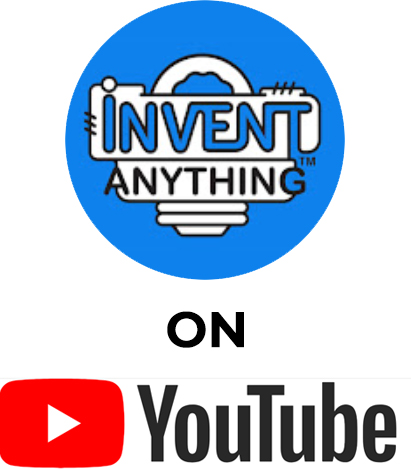Welcome back to the blog post inspired by our latest episode of Invent Anything. Today’s topic is all about innovation: what truly drives it—intrinsic or extrinsic motivation? This is something every CEO, inventor, and leader needs to consider. Do people create their best work when they love what they do, or does offering a reward push them to go further?
Let’s break it down. Intrinsic motivation comes from within—you do something because you find it inherently rewarding. Think about a painter who paints for the love of art, or an inventor who creates purely out of curiosity. On the other hand, extrinsic motivation is driven by outside factors—like money, recognition, or rewards. Both play a role in innovation, but which one is the key to driving patent success? Let’s explore.
The Tale of Two Motivations: What Fuels Innovation?
Imagine two groups of students. One group is intrinsically motivated—they love solving math problems for the challenge itself. The other group is extrinsically motivated—they’re paid for every good test score and get a bonus at the end of the semester.
At first, the intrinsically motivated group excels. They love what they’re doing, and that love drives their success. But soon, the extrinsically motivated group catches up. Why? Because they’re being rewarded. However, over time, the extrinsic group’s performance declines—they’ve become reliant on the rewards, which start to feel less motivating. Meanwhile, the intrinsic group continues to thrive.
This tells us that while extrinsic motivation can provide an initial boost, intrinsic motivation sustains creativity and innovation over the long haul. This is especially important when striving for patent success, where persistence and passion are key.
The Power of a Challenge: How Challenges Spark Patent Innovation
Challenges ignite creativity. Think about John F. Kennedy’s moonshot speech—it inspired a generation to innovate because the goal seemed almost impossible.
In business, challenges serve as a form of extrinsic motivation that can kickstart intrinsic passion. For example, a manager at IBM might require employees to present three problems and several potential solutions at every meeting. This challenge doesn’t just push the team—it helps them produce more creative and innovative ideas, driving better outcomes and even securing patents.
When used correctly, challenges can merge extrinsic and intrinsic motivation to create an environment where innovation and patent success thrive.
Autonomy and Creativity: Freedom to Innovate and File Patents
Now let’s talk about autonomy and its role in driving innovation. When you’re given full control over a project, it’s easier to be creative. The same applies to inventors working toward patentable innovations—having the freedom to explore, test, and refine ideas without rigid oversight leads to breakthroughs.
But there’s a fine line. Too much freedom without structure can lead to confusion. The balance is in clear goals combined with autonomy over how those goals are achieved. For inventors, this freedom to explore within set parameters can be the difference between a creative block and a patented innovation.
Resources and Constraints: How to Innovate for Patent Success
Resources are essential to creativity—but surprisingly, having too many resources can sometimes stifle innovation. Constraints—like limited time or budgets—can force inventors to think outside the box. Some of the most innovative solutions come from teams with fewer resources.
For instance, a group of MIT students asked to build something with minimal materials often outperformed those with more resources. This demonstrates that constraints push people to be more inventive—a crucial factor for those aiming to secure patents on their innovations.
The Creative Team: Mixing Innovators and Adaptors for Patent Success
Teams play a crucial role in innovation. A mix of innovators and adaptors—those who push boundaries and those who refine existing systems—is essential for driving creativity and patent success. You need the bold ideas from innovators paired with the practicality of adaptors to move an idea from concept to a patentable invention.
Think of it like a band: you need the rhythm section (adaptors) to keep the beat and the lead guitar (innovators) to bring the flair. Without both, your team won’t generate the creative output needed for breakthrough inventions.
Bringing It All Together: How to Drive Innovation with Intrinsic Motivation for Patent Success
So, what drives better innovation—intrinsic or extrinsic motivation? The answer lies in using both, but knowing when to shift focus. Extrinsic motivation, like challenges or rewards, can get the ball rolling. It gives people that initial push. But to sustain innovation, especially when aiming for patent success, it’s intrinsic motivation that really matters.
As an inventor, entrepreneur, or leader, your goal should be to create an environment where intrinsic motivation thrives. Offer challenges, provide autonomy, and even embrace constraints to push your team toward patentable innovations. Encourage passion, curiosity, and a love for problem-solving, and you’ll see innovation—and your patent portfolio—flourish.
Now it’s your turn. Think about the projects you’re working on. How can you tap into your intrinsic motivation to drive innovation? How can you create challenges that spark creativity in your team, leading to patentable inventions? The next big idea could be just one good challenge away.
Stay curious, stay creative, and as always—keep inventing.


